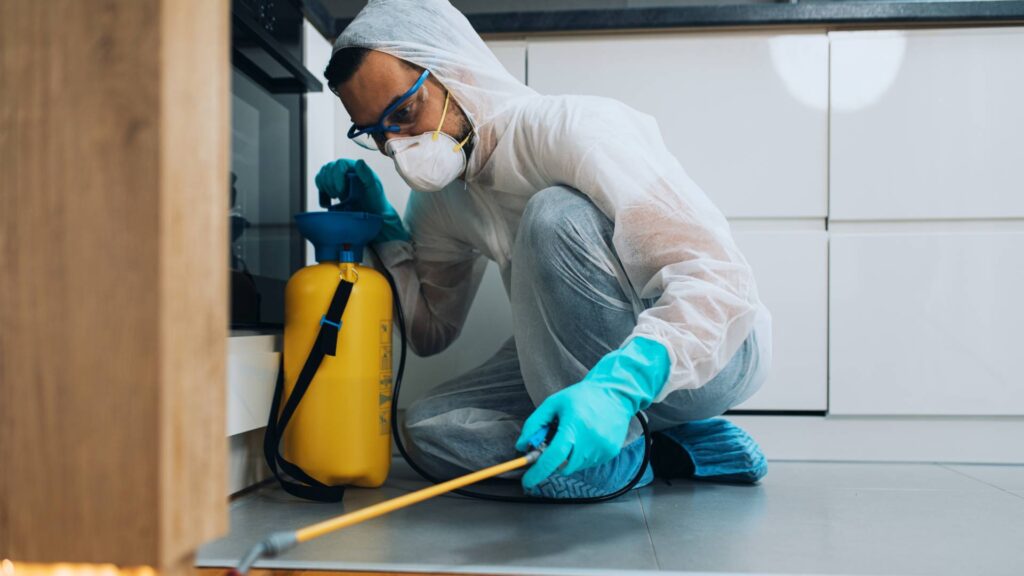Table Of Content
ToggleAs a seasoned pest control expert, I’ve encountered numerous households grappling with the nuisance of flea infestations. These tiny pests not only cause discomfort to your family and pets but can also lead to serious health issues.
Understanding the flea life cycle and implementing targeted strategies are crucial in combating these unwelcome guests. This article delves into comprehensive methods to eradicate parasites from your home and yard, ensuring a safe and pest-free environment.
Fleas are parasitic insects that feed on the blood of animals, including our furry companions. A flea infestation is not just a nuisance; it can cause skin irritation, allergic reactions, and even transmit diseases to pets and humans.
Understanding the flea growth cycle is crucial for effective treatment. Here’s the breakdown:
This rapid reproduction is why a small flea problem can quickly become a full-blown invasion.
Keep an eye out for these tell-tale signs that this parasites might be living rent-free in your home:
Tailor your pest management strategy. Start now.

Now that you know the enemy, it’s time to wage war! Here’s a multi-step approach to eliminating parasites from your home:
Vacuuming is your best friend in the fight against fleas. It sucks up adult fleas, eggs, and larvae, disrupting their growth cycle. Focus on carpets, rugs, furniture upholstery, and pet cushions. Empty the vacuum cleaner bag outside immediately after use and seal it in a trash bag before disposal.
There are various pest control options available, including:
Always follow the manufacturer’s instructions carefully when using any flea remedy product.
Understanding the average cost of home fumigation can help homeowners prepare for the financial aspect of flea eradication.
Choose the best pest control frequency. Get expert guidance.

This parasites can thrive in your yard, jumping onto your pets and reinfesting your home. Here’s how to tackle the problem outdoors:
For comprehensive yard defense, consider exploring pest control solutions for ticks as well, since ticks often accompany fleas in outdoor areas.
Ready to fumigate your home? Contact us today for a customized quote!

Pets, especially those who spend time outdoors, are magnets for parasites. They can quickly become infested and unwittingly bring these unwelcome guests into your home. Therefore, managing them on your pet is the crucial first line of defense in any pest control strategy.
Regular parasite checks are essential for catching an infestation early. Here’s how to inspect your pet:
Once you’ve confirmed a flea invasion, consult your veterinarian. They can recommend the most effective treatment option for your pet’s age, health, and lifestyle. Some popular choices include:
Always follow your veterinarian’s instructions carefully when administering any flea treatment to your pet.
Don’t let pests take over your space. Get in touch now and reclaim your home!
The best way to deal with bugs is to prevent them from taking hold in the first place. Here are some strategies to keep your pet flea-free:
By diligently checking your cat or dog for fleas, using preventative medication, and maintaining good hygiene practices, you can significantly reduce the risk of fleas taking hold on your furry friend and spreading to your home. Remember, a flea-free pet is a key component of a flea-free home!
Need expert fumigation services? Click here to schedule an appointment.

Once you’ve eliminated the initial infestation, here’s how to keep those pesky fleas at bay:
Say goodbye to pests for good. Book your fumigation session now!

In my extensive experience as a pest control expert, I’ve learned that the key to defeating fleas lies in a comprehensive, integrated approach. By understanding the flea growth cycle, employing the right flea solutions, and maintaining a clean environment, you can effectively eliminate fleas and reclaim your home. Remember, a successful strategy involves an integrated approach:
With dedication and the right methods, you can say goodbye to those pesky fleas and enjoy a pest-free haven for you and your furry family.
If you’re dealing with a severe flea invasion , don’t hesitate to consult a professional pest control service. Our expertise can help ensure a complete eradication and prevent the problem from recurring.
To get rid of fleas in your house fast, combine thorough vacuuming, washing all bedding and textiles, and applying flea solutions such as sprays or powders. Immediate and aggressive cleaning and treatment can drastically reduce the flea population quickly, especially when targeted to all life stages of fleas.
It typically takes three to four weeks to completely get rid of fleas in a house, as this timeframe allows for all life stages of infestation to be addressed, including any eggs or larvae that may develop after initial treatments. Consistent cleaning and application of pest control products are crucial during this period.
Looking for a pest-free home? Reach out to our experts today!
The best thing to kill fleas indoors is a combination of mechanical and chemical methods, including vacuuming, steam cleaning, and using insecticides specifically designed for indoor flea control. Products containing adulticides and insect growth regulators are effective in eliminating fleas at all life stages.
Your trusted pest control experts in Southern California. Keeping your neighborhood pest-free!